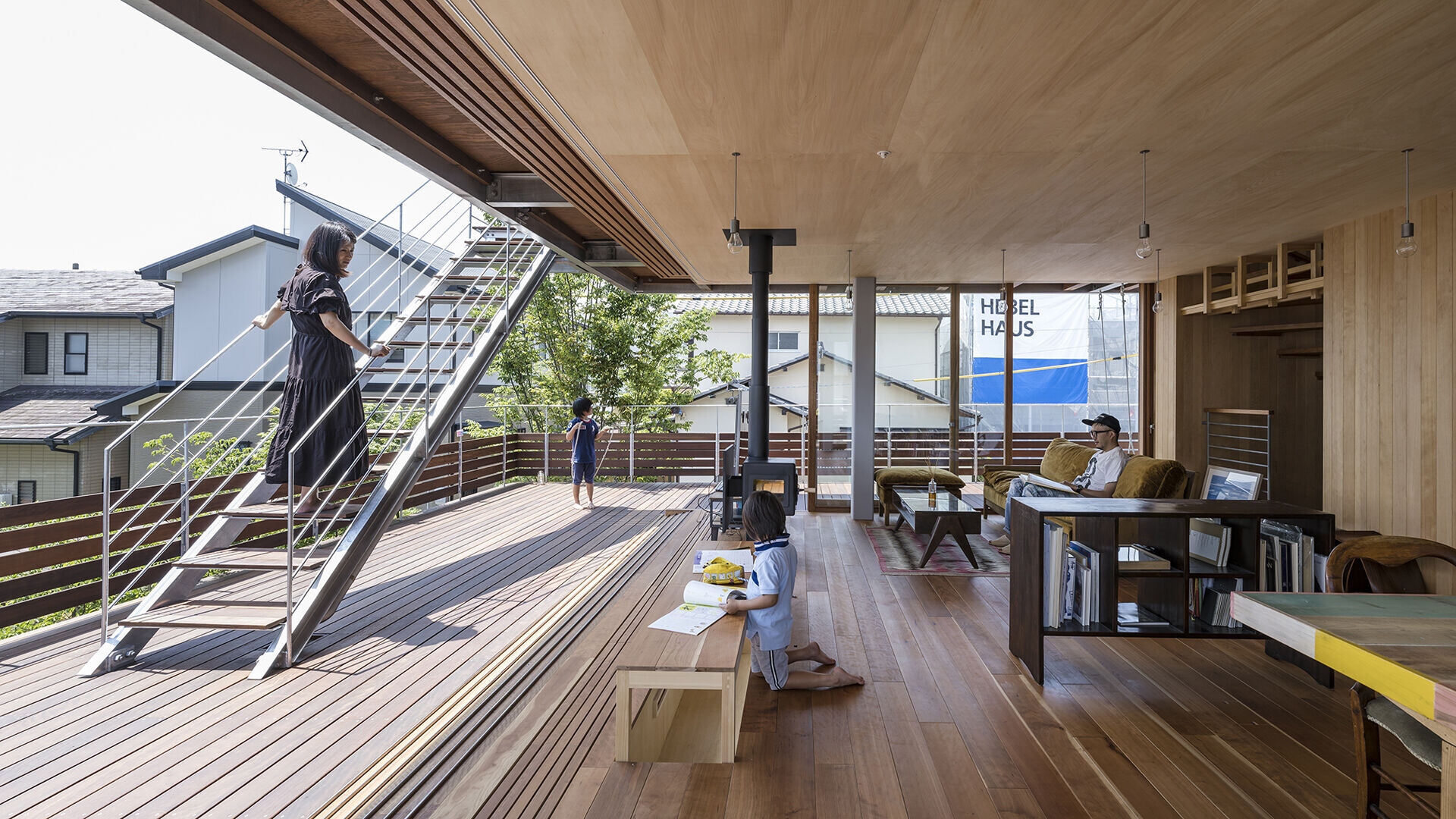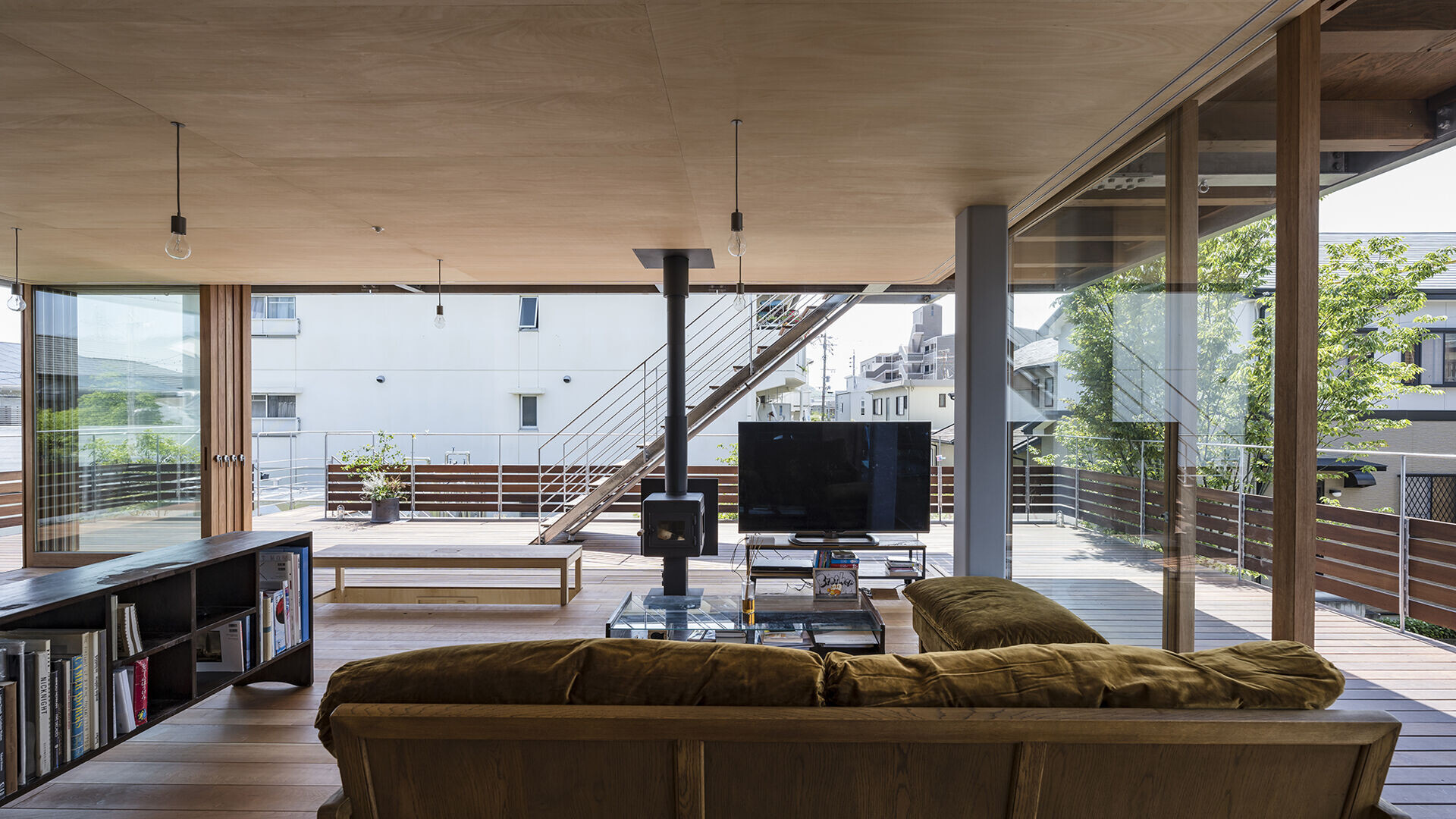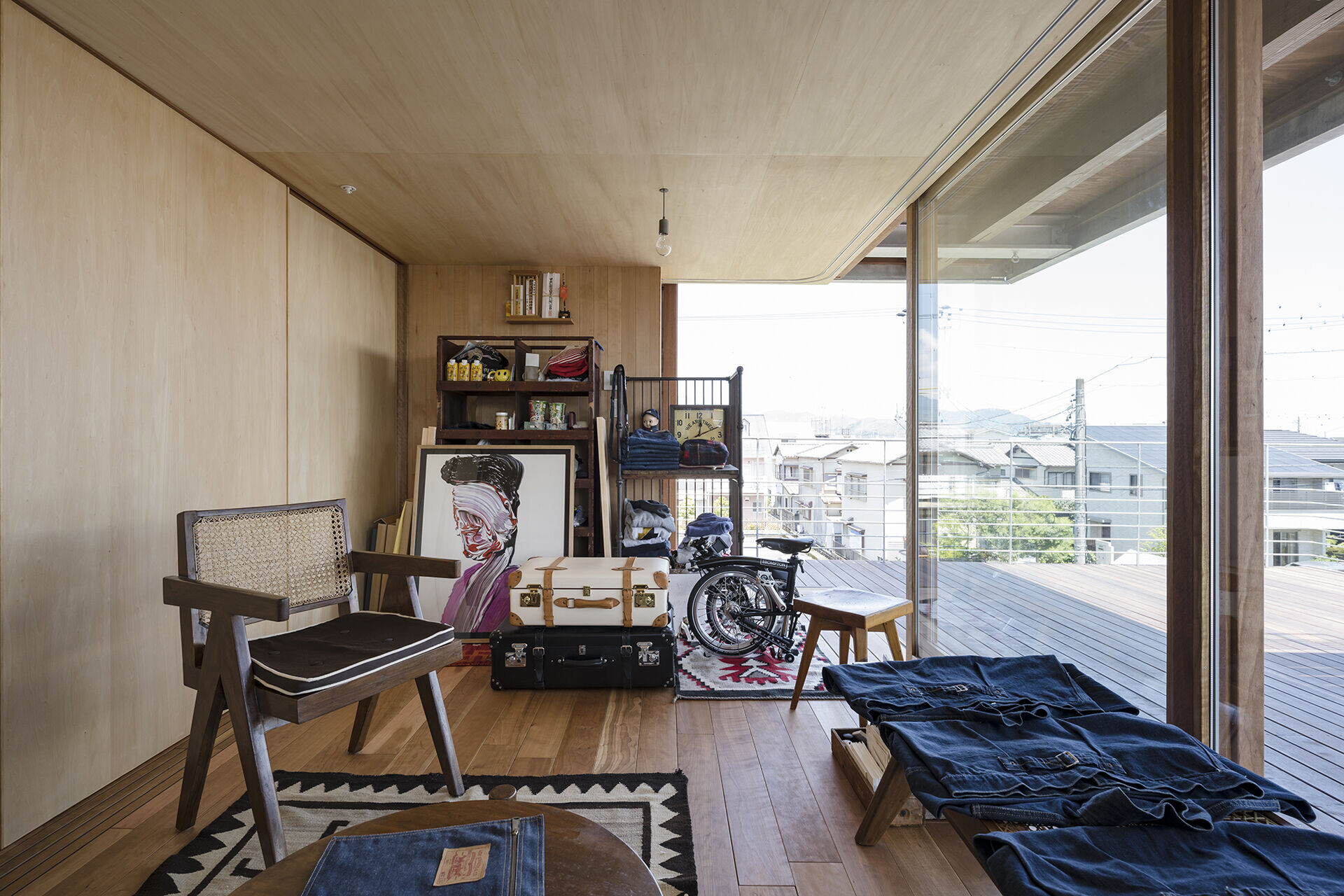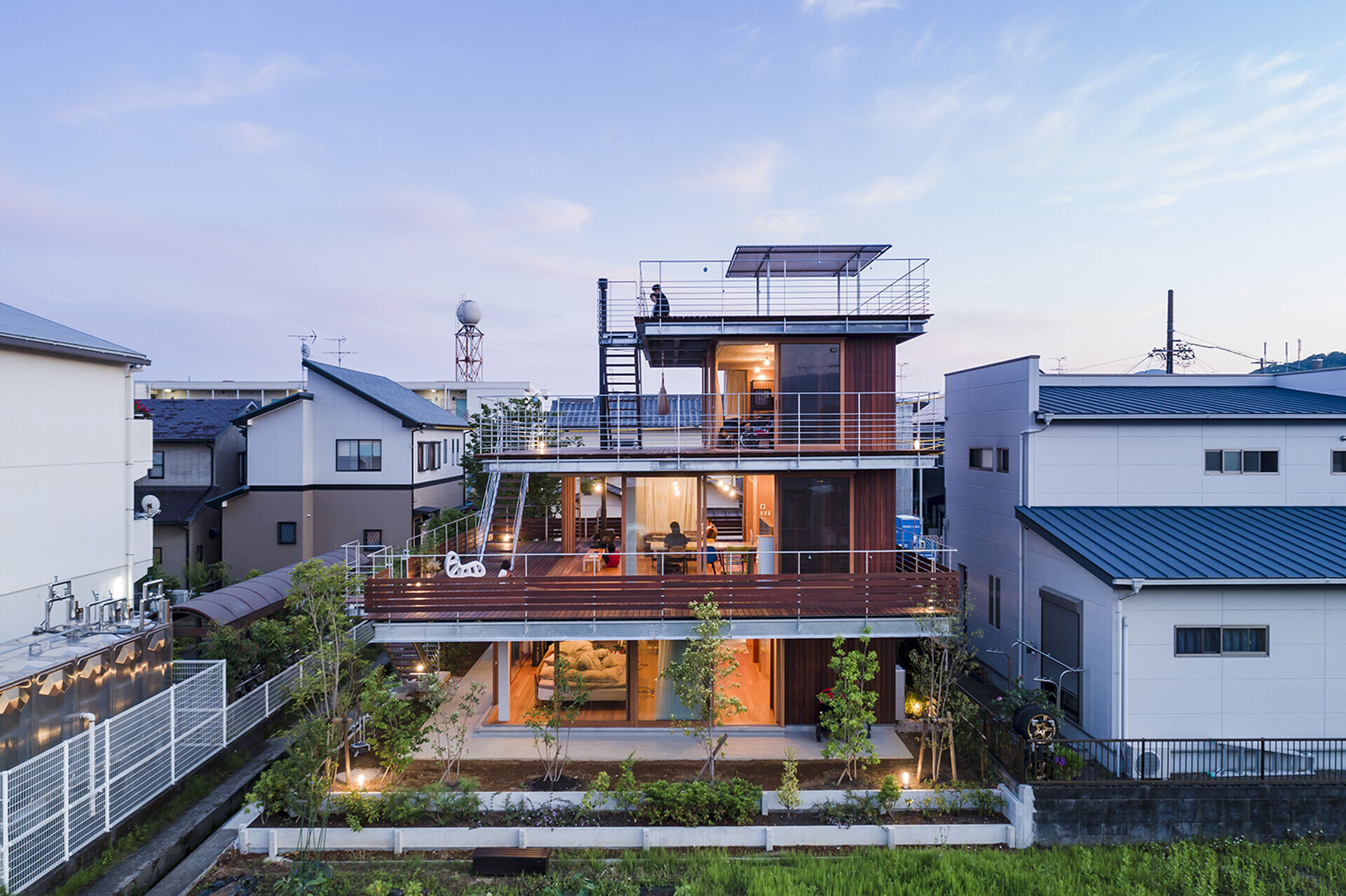Fuji and the terrace
Mt. Fuji can be seen from every corner of Shizuoka. Every Japanese person has a longing for the barren mountain, which is nothing more than a pile of pumice erupting from beneath earth’s surface. There is no doubt that the view of Mt. Fuji continues to be a luxury for Japanese people living on east of the Tenryu River. The faint sound of running water, which is used for agriculture, could be heard on site. An ample of rented farms are also located towards the direction of Mt.Fuji.

There is a local residential rule that the height of the building’s roof should be the same throughout. Most homes have similar roofs and windows at the same height adhering to local conventions. This is such that the act of going up to the second floor in order to witness the beautiful scenery is a privilege distributed equally to all the residents. Therefore, the act of "climbing upwards" has always been naturally embedded into the daily lifestyle of Japanese people.

Housing in mid-air and privacy
The scenery changes as you ascend to the top. This may seem obvious at first but it's not the same as going upstairs. When the house is lifted up with large overhanging decks, the perception of the scenery and lifestyle changes. The room is like a side dish placed on a cutting board where the main living spaces are flipped over as compared to conventional architecture. Although these cutting boards may function as a roof, being the platform to provide for the living spaces is its main function. A home is found on this house of floating boards, just as the interior is only possible if there is the shell of architecture.

This way of living in mid-air has a form of open privacy. In everyday life, human’s directional perception towards our environment are either horizontally or downwards. It is a natural process as long as we are bounded by the forces of gravity. If you shift your focus upwards and continue walking, you'll get caught in holes and ditches. Therefore, being on a higher ground creates a subtle sense of privacy enabled by gravity.

Living in the gardens
Humans cannot live apart from nature. It is not just the basic requirements such as oxygen and water, but the ecological system as a whole cannot be separated. Modern people can no longer cope with the real outdoors. A good relationship with the external environment is needed. Just as a person cannot eat a tree bark or an animal as a whole, a person cannot live without nature. That's why a garden is considered in the design of the house.

Gardens are a natural alternative to humans who belongs to nature. But one cannot live in the garden as a garden is an environment to be indulged in. People can live on this deck where privacy is maintained and where long spanning eaves shield the inhabitants from rain, free from the muddy soil.
Team:
Design Principal: Takaharu Tezuka + Yui Tezuka
Lead Architects: Kenta Yano
Structure: Ohno JAPAN/ Hirofumi Ohno Ryuhei Fujita
Consultants: Bonbori Lighting Architect & Associates/ Masahide Kakudate, Toshio Takeuchi
Construction company: G-NEST Co., Ltd. / Takuma Sato
Carpenter Company: Hamada Architecture / Tomonori Hamada
Steel frame company: Takagi Iron Works Co., Ltd./Hidenobu Takagi
Equipment company: Adachi Equipment Co., Ltd. charge / Yoshio Adachi
Electric company: Koizumi Denki Shokai / Masataka Takeuchi
Landscaping company: TEN-KEI / Keiichi Ishikawa ・Kimata Zouen Co., Ltd. / Masatsugu Kimata
Wooden fittings company: Kubota Co., Ltd./Katsushi Kubota
Stove company: Stove Kobo Sanrinsha / Atsushi Takeuchi






































